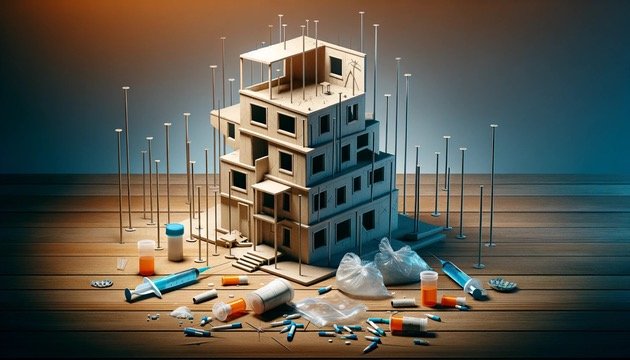Homelessness
Stop Making it Worse.
Start Saving Lives.
Q. What is the first thing you do when you find yourself in a hole?
A. Stop digging.
With public policy - as with hiking in the woods for that matter, getting headed in the wrong direction is easy to do. Pretty quickly, you can end up going in big perilous circles.
Look at how lost we are now with homelessness. Good intentions do not always lead to good programs. It is time to come full circle and acknowledge approaches that do not work. Two ideas that fall into the failure category are “housing first” and “harm reduction”.
Let’s start with the widely accepted observation that the majority of the chronically homeless suffer from substance abuse, mental health issues or a co-occurring combination of both. Successfully addressing homelessness requires addressing its underlying causes. This only makes sense and should not be a contentious notion.
Substance abuse and addiction impact afflicted individuals in predictable, consistent patterns. One pattern is that the addicted person will continue in addiction until something stops them. By definition, the person in active addiction is unable to stop. Some sort of direction-changing, life-altering event such as hospitalization, medical emergency, arrest, imprisonment, entering treatment, etc is necessary. “Housing first” strategies suggest that providing an individual with a place to live will somehow allow them to make better life choices, including discontinuing substance abuse. This notion is not realistic.
When a substance-abusing individual is ready the immediate next right step is inpatient detox and treatment - which includes housing by the way. Providing housing without preconditions such as drug testing only enables the addict to keep using and tragically delays the possibility of life-saving treatment. The delay further damages the physical/cognitive health of the afflicted individual while posing risks to the community
What is needed is a shorter pathway to residential treatment for anyone willing to engage in a committed manner. Treatment on demand should be the policy goal. When an individual is ready to enter treatment there is a moment of opportunity which should be seized. Residential (also called inpatient) treatment brings needed structure, education, support, and accountability necessary to begin recovery. This treatment-on-demand approach will require more treatment infrastructure and professionals to handle the increased volume and ensure more effective intake pathways.
Taxpayer money allocated towards housing first or housing without preconditions could be better used providing treatment pathways and structured support necessary to reduce homelessness and improve lives.
“Harm reduction” strategies suggest providing addicts with clean, safe places to shoot up will save lives. Clean needles and overdose response services will be a benefit to addicts. Are you serious?! It seems analogous to peeing in your bed on a cold night to stay warm. Might feel good for a moment but only makes things worse. Much worse. Once again, taxpayer money would be much better spent providing structured pathways to recovery, not clean needles.
Locations such as Portland OR and Vancouver BC have experimented with legalizing drugs and accommodating alternative lifestyles of substance abusers. The results have been tragic on an epic scale and should help confirm approaches that do not work for either the individual or community at large.
The US abandoned its nationwide mental health infrastructure which housed and supported mentally ill individuals when they were unable to successfully live independently. The idea that it was wrong to “warehouse”, sometimes involuntarily, the mentally ill won public favor. Driving Policy changes with passage of the Lsntermsn-Perry’s-Shirt Act in 1967. Mentally ill individuals were “mainstreamed” and “returned to the community”. The plan to replace centralized campus facilities with local resources was never really implemented. Is it any wonder the mentally ill now languish on the streets?
Both the addicted and mentally ill need safe, structured residential environments and programming. There are no easy answers, and results vary, but structured residential environments provide the best chance for people to move towards their full positive potential. We should aggressively build back mental health infrastructure, capacity and programming.
Treatment on demand and rebuilding our mental health infrastructure will not be cheap. If funding can be found for ideas that do not work, certainly we can invest in more holistic, rational approaches that can.

